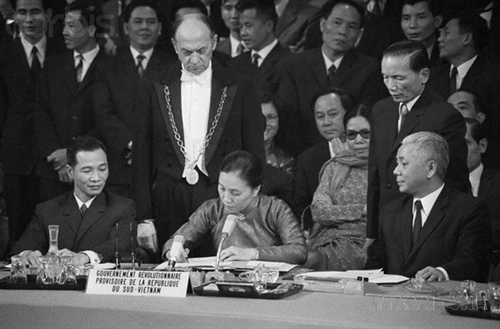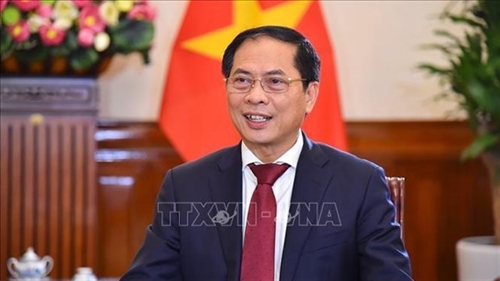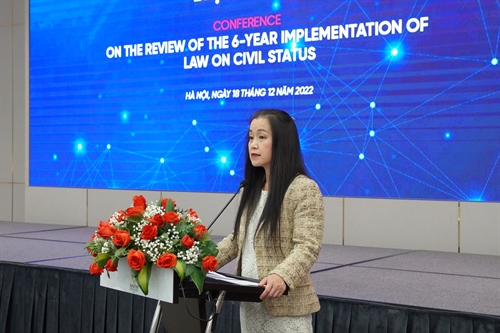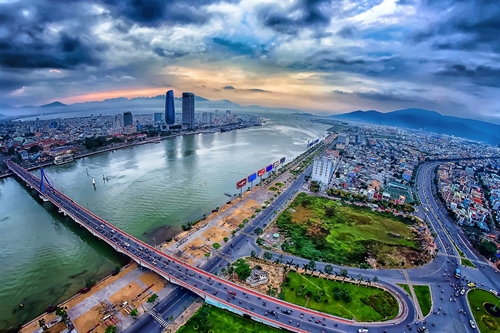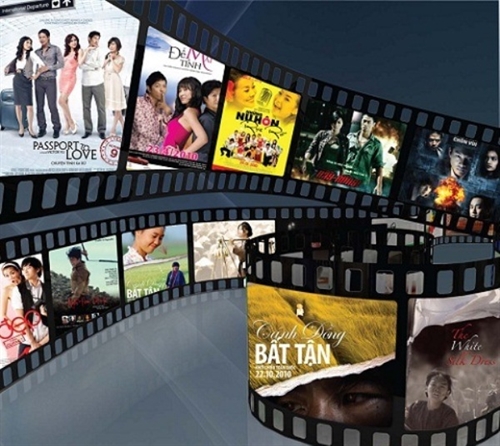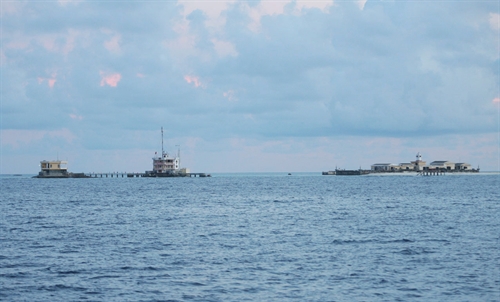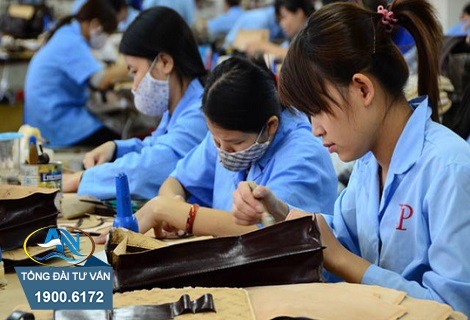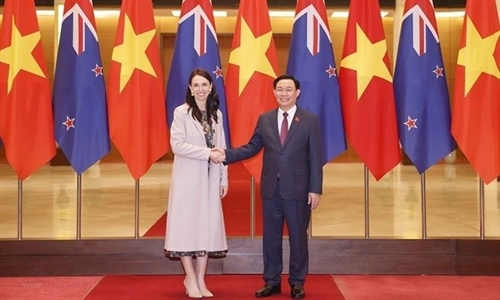The Party and the State have always paid attention to improving institutions and policies for cultural development, considering it a prerequisite for making culture a spiritual foundation, an objective as well as a strong motivation for the cause of national construction and defense. This is affirmed at the Culture Workshop 2022 held last December in Bac Ninh province under the theme “Institutions, Policies and Resources for Cultural Development”. Vietnam Law & Legal Forum magazine would like to introduce to readers this article, which is based on the speech delivered by Minister of Culture, Sports and Tourism Nguyen Van Hung, member of the Party Central Committee, at the workshop.
Evaluation of the institution and policy building and resource mobilization for cultural development
Over the past decades, the Vietnamese Communist Party and the State have always laid stress on the important role of institutions, policies and resources for cultural development. From the 1943 Cultural Platform to Resolution 03/NQ-TW of the 5th plenum of the 8th Party Central Committee, Resolution 33/NQ-TW of the 9th plenum of the 11th Party Central Committee, Resolution of the 13th National Party Congress, and most recently the National Cultural Conference (2021), the Party has always affirmed the underpinning orientation that the formulation, consolidation and betterment of the legal grounds and cultural institutions constitute a prerequisite for creation of a favorable operation environment which is capable of promoting to the utmost the internal strength, increasing the soft cultural power, thereby making culture a spiritual foundation, an objective as well as a strong motivation for national construction and defense. This guideline has been materialized through action plans, strategies and programs on cultural development, which have been carried out at different levels by many agencies, committees, sectors, mass organizations and individuals. A comprehensive evaluation of the process of institution and policy formulation, consolidation and improvement as well as resource mobilization for cultural development in Vietnam over the past years will assist in acknowledging the achievements and identifying existing bottlenecks so as to put forward necessary transformation requirements with a view to achieving the objectives Vietnam aims for.
 |
| The panorama of the Culture Workshop 2022 in Bac Ninh province__Photo: Doan Tan/VNA |
Achievements
Vietnam has created a comprehensive and systematic legal foundation for enhancing the culture’s internal strength and motivation for national development. The cultural domain is now directly regulated by five laws, namely the Law on Cinematography, the Law on Cultural Heritages, the Law on Advertisement, the Law on Intellectual Property, and the Law on Library, which are detailed by 50 government decrees, 14 prime ministerial decisions and over 100 circulars and joint circulars.[1] These legal documents have step by step created a fairly consistent and well-organized legal framework. Especially, they have contributed to institutionalizing and detailing the 2013 Constitution’s provisions on guarantee of people’s rights to literary and artistic creation as well as the right to benefit from and approach cultural values and be involved in cultural life. At the same time, the institutionalization of the legal system has incrementally helped regulate the relationship among various subjects in the cultural system toward greater harmony and healthiness. The State has shifted from the commanding position to the role of manager and sponsor. Thanks to this structural shift, the role of policy and law in the cultural domain has been heightened.
The policy frame has created an institutional environment which enables various cultural industries to tap and transform the cultural resources into cultural soft power. In 2016, a strategy on development of Vietnamese cultural industries to 2020, with a vision toward 2030, was adopted. It marked a new step of development in the creation of a favorable institutional environment for cultural industries to tap and transform the cultural resources into attractive products and services. Ministries and ministerial-level agencies, especially the Ministry of Culture, Sports and Tourism, have actively carried out policy- and law-making activities to create a legal corridor conducive to the development of cultural industries. These active institutional changes have developed the cultural industrial market in Vietnam to a new height, making significant contributions to the growth of national GDP. According to statistics, Vietnam’s cultural industries accounted for 2.68 percent of GDP in 2015 and about 3.61 percent in 2018. The cultural industries have initially promoted the efficiency of cultural resources and transformed cultural values into cultural soft power, increased their competitiveness and international integration.
The system of legal documents on taxes, socialization promotion and resource attraction has formed a legal basis for mobilizing all social resources for culture. On the basic principle that “the State’s investment in culture must correspond to the economic growth level”[2], the ratio of state budget investment in culture has increased from year to year. In the 2014-19 period, the budget allocated to the Ministry of Culture, Sports and Tourism for cultural development surpassed VND 5,735 billion, consisting of over VND 918 billion for development investment and nearly VND 4,817 billion for non-business activities. In the period prior to 2016, investment for cultural development in localities was carried out through the national target program on culture. In the 2014-15 period, this program was provided with VND 546 billion, including VND 290 billion for development investment and VND 256 billion of non-business projects. In the 2016-20 period, the total budget for the national target program on cultural development increased to VND 10,620 billion[3]. Basically, the investment sources from these programs have stepped up the development of tourist economy and improvement of cultural life for people, particularly in rural, deep-lying, remote and border areas and on islands[4].
In addition, the “socialization” policy established in various documents[5] has created preferential mechanisms and policies (regarding taxes, charges, credit, land use rights, etc.) for mobilizing investment, financial assistance and donations from individuals and social organizations for cultural development. The State has also promoted the establishment of funds for training, learning promotion, talent development, literary and artistic promotion, cinematographic development, publication support, etc. For example, the 2008 Law on Value-Added Tax (VAT), revised in 2014, identifies a list of objects not liable to VAT. Under Article 5.12 of this Law, the cultural domain, covering cultural activities, exhibitions, art performances, film production, import, distribution and screening, enjoys the preferential tax rate of 5 percent while other commodities and services, including tourist services and activities, are subject to the tax rate of 10 percent. Besides, other resources necessary for cultural development, such as human resources, infrastructure, professional know-hows, etc., have also been mobilized, making important contributions to the positive results of Vietnam’s cultural-artistic activities.
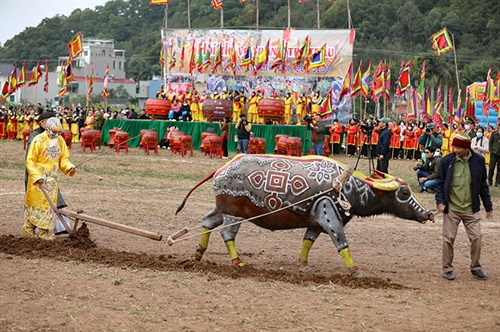 |
| A respectful farmer (in yellow robe) plays the role of King Le Dai Hanh at the 2023 Tich dien (Plowing) festival in Ha Nam province__Photo: Thanh Tung/VNA |
Many mechanisms and policies have incrementally improved the quality of human resources in the cultural and artistic domains. By June 30, 2021, the total cultural, sports and tourist personnel nationwide had reached 899,900 people, including 19,751 in the cultural and artistic domains, 10,199 in the sports and physical training domain, and 870,000 in the tourist domain[6]. The contingent of personnel in the culture, sports and tourism sector has been well structured. The policies on discovering, training, fostering and honoring cultural and artistic talents have been applied to attract quality human resources for the cultural sector.
The institutional improvement has contributed to raising the efficiency of conservation and promotion of the values of national traditional culture, cultural-historical heritages and relics. Various specific programs have been worked out for materialization of the Strategy on development of Vietnamese culture to 2030. These include the 2021-25 Program on conservation and sustainable development of values of Vietnamese cultural heritages; the 2021-30 Program on digitalization of Vietnamese cultural heritages; and Program 217/CTr-BGDDT-BVHTTDL of March 4, 2022, on coordination with the Ministry of Education and Training in tradition education for students via intangible cultural heritages and relics, central and local museums. Vietnam has also endeavored to promote the national cultural heritages to the world with two more intangible cultural heritages honored by the UNESCO (Then singing practice by Tay, Nung and Thai ethnic minorities and pottery art of Cham minority people). It was elected member of the Inter-Governmental Committee for Convention on Protection of Intangible Cultural Heritages for the 2022-26 term.
The institution and policy formulation has respected and protected the cultural diversity of different ethnic groups, regions and raised the cultural life of people, contributing to the protection of political security and defense of national sovereignty. Diverse programs and activities such as cultural festivals of nationalities, mobile performance programs, etc., have been regularly organized with a view to meeting the cultural enjoyment demands of people in ethnic minority areas, deep-lying, far-flung, border and island regions, thus narrowing the cultural gap between rural and urban areas and between regions nationwide.
Cultural environment-building efforts have brought about initial results. A series of digitalization programs have been approved by the Government, such as the Program on Digitalization of Vietnamese Cultural Heritages in the 2021-30 period; the Program on Digitalization of Libraries to 2025 with a Vision toward 2030; the Scheme on Digitalization of Data on Festivals in Vietnam in the 2021-25 period; and the Scheme on Online Film Distribution Center, etc. Especially, during the period of Covid-19 pandemic, cultural and artistic activities tended to move online. Various art performance programs have been widely disseminated via online platforms and social networks with high effectiveness.
Limitations
Many documents remain contradictory and overlapping, thus yielding limited legal effect. A number of domains like performance art, fine arts and photography have not been regulated by any laws or ordinances, thus greatly affecting state management work.
The still inadequate institutional framework has affected the strategy on development of cultural industries in the new context, reducing the constructive role and competitiveness of the cultural market. The policies on development of cultural industries remain incompatible with the market development. Many institutions and regulations concerning cultural industries have not been promptly updated to be in line with international standards.
The coordination between agencies, sectors as well as between public and private sectors remains loose.
Under current legal provisions, culture has not seen as a priority sector and cultural development has been hamstrung with many bottlenecks and barriers in terms of social awareness.
Investment in culture under current mechanisms and policies has not matched the role and position of culture in development. Under the National Assembly’s Resolution 40/2021/QH15 of November 13, 2021, on allocation of central budget funds in 2022, the budget allocated for the culture and information sector represented only 0.9 percent of the total allocated budget.[7]
Mechanism and policy loopholes have caused inequality between the public and private sectors in the access to the State’s support sources. This has not created motivation for creation of high-quality works as well as a healthy competition environment in the culture-art domain.
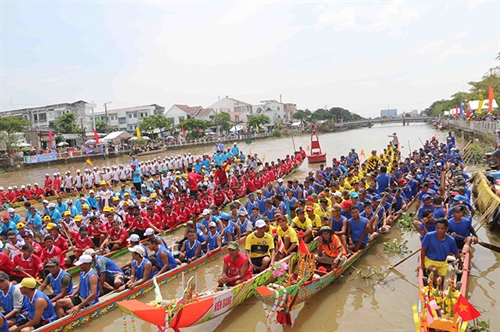 |
| Boat racing teams at Ok Om Bok festival, Tra Vinh province, gather before the race__Photo: Phuc Son/VNA |
Orientations and solutions
The above evaluation has led to solutions to redress the inadequacies and bottlenecks in institutional enforcement through the development and perfection of policies to create mechanisms to boost cultural development in the new period. Specific solutions include:
(i) To develop and improve the legal system directly regulating the cultural domain, particularly creating resources for development. Concretely, to amend and supplement the Law on Cultural Heritages with a view to removing inadequacies and bottlenecks and harmonizing the relationship between value conservation and promotion. To revise the Law on Advertisement’s provisions on forms and means of advertisement. To draft a Law on Performance Arts, and decrees on literary activities, policies on digital cultural property, etc.
(ii) To further revise a number of specialized laws such as the Law on Investment, and the Law on Investment in the Form of Public-Private Partnership, especially the Law on Corporate Income Tax. To add policies on development of cultural talents and human resources with the State’s resources, giving priority to creative and managerial personnel.
(iii) To further implement the national target program on culture[8]. Investment in cultural development requires huge resources. The investment capital from the 2014-15 national target program on culture has proved effective, but the termination of this program when the demand for local cultural development increases has posed many challenges to cultural development. Therefore, a comprehensive national target program is required to make culture prosper. Investment in culture should be synchronous and comprehensive at the minimum rate of 2 percent of the total annual budget expenditure as advocated by the Party and the State.
(iv) To complete the system of policies and formulate a strategy on development of Vietnamese cultural industries to 2030, with a vision toward 2045, focusing on raising the competitiveness and integration of the cultural market. To strengthen the cultural market, prioritizing the development of some cultural industries with international integration advantages. To attach importance to the development of the online cultural market. To increase investment in human resources development.
(v) To develop a set of national criteria on cultural development in order to measure, assess and oversee the share and growth of culture in overall national development and, at the same time, to provide accurate inputs for the formulation of institutions, policies and intervention programs.
(vi) To develop cultural policies for proactive international integration, cooperation and exchange in order to vigorously introduce the Vietnamese cultural values to the world.
(vii) To develop human resources in the field of culture and art. To work out policies on discovery, employment and preferential treatment of culture talents.
(viii) To develop the institutions, policies and resource mobilization for stepping up research, technological development and digitalization in the cultural domain, for development of synchronous and modern technological infrastructure up to the requirements of the Fourth Industrial Revolution, and for completion of the national cultural database. To apply GIS technology to the management, protection and promotion of cultural heritages. To enhance cultural research cooperation with foreign organizations and international publication of Vietnamese studies on culture and arts.-

